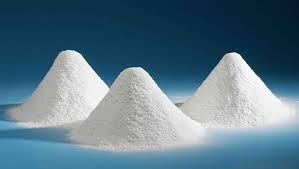Lightweight, inert, hollow sphere cenosphere particles are produced from the silica and alumina that is filled with air or inert gasses. The particles are basically produced as a byproduct of coal combustion at the thermal power plants and then are delivered to the cenosphere exporter to distribute the product to the places where it is demanded. The cenosphere particles are rigid, lightweight, waterproof, and insulative that makes them a demanding byproduct. The cenosphere has color varying from gray to white and consists density that is about 0.4-0.8 g/cm3, i.e. 0.014 to 0.029 lb./cu giving them a great buoyancy. Cenospheres are broadly used as filler for metals and polymers to make them a lightweight compound material along with high strength when compared to another kind of foam materials. For conductive coatings, fabrics, and tiles silver-coated cenospheres are widely used.
Cenosphere exporter has been using these hollow sphere particles to improve the properties of finished consumer products. At first, the particles were introduced as an extender for plastic composites to make them compatible with thermoplastics, plastisols, latex, polyesters, phenolic resins, epoxies, and urethanes. Synthetic foams that are produced from cenosphere have been verified with great mechanical properties as compared to those components that are produced with fabricated microspheres. Cenosphere exporter has quickly identified the compatibility of cenosphere particles with the cement and other building material that are used as coating and composites. Since the uses of cenospheres have been identified, the lightweight, hollow particles are widely used for manufacturing insulations, sports equipment, marine craft bodies, automobile bodies, heat and fire protection devices, and paints.
Different market sectors in which the cenospheres are used:
- Ceramics – castables, refractories, fire bricks, tile, aluminum cement, coatings, insulating materials
- Plastics – SMC, BMC, extruding, molding, injection, PVC flooring, low and high density polythene, nylon, film, polypropylene
- Constructions – mortars, grouts, specialty cement, roofing materials, coatings, acoustical panels, stucco, shotcrete, gunite
- Recreation – floatation devices, marine craft, surf boards, bowling balls, golf equipment, kayaks, footwear, lawn and garden décor
- Automobiles – tires, composites, engine parts, trim molding, brake pads, body fillers, sound proofing material, plastics
- Energy & technology – drilling muds, oil well cements, grinding materials, industrial coatings, aerospace coatings and composites, propeller blades, explosives.

No comments:
Post a Comment